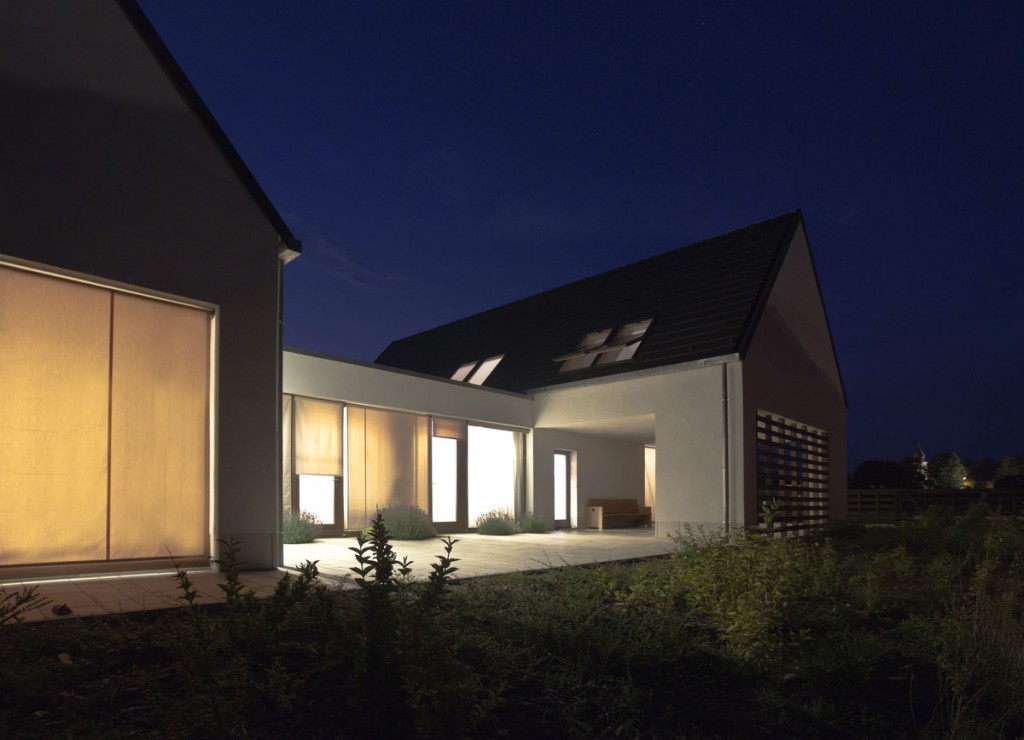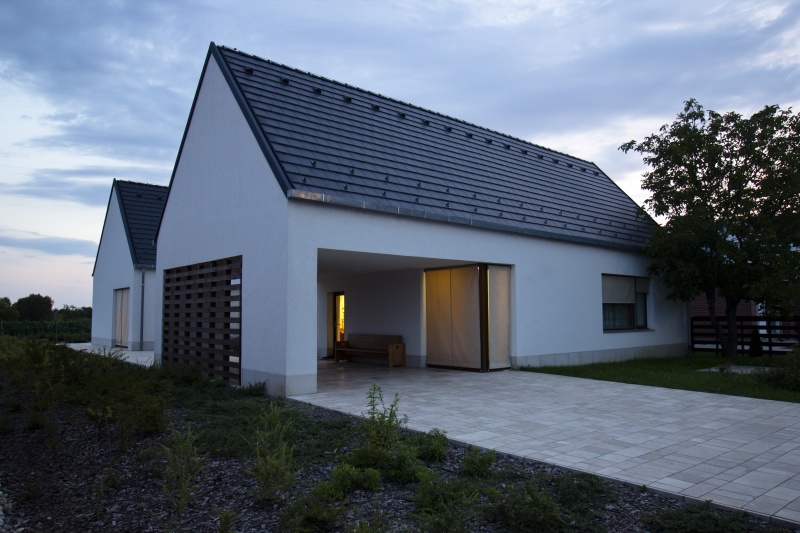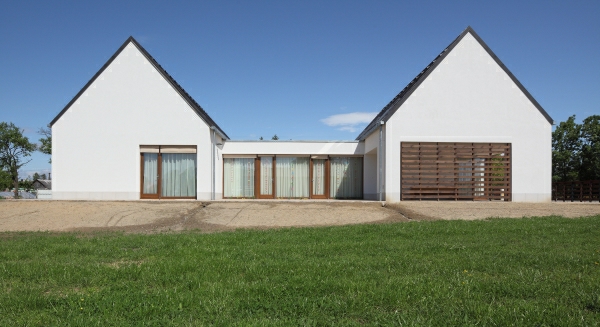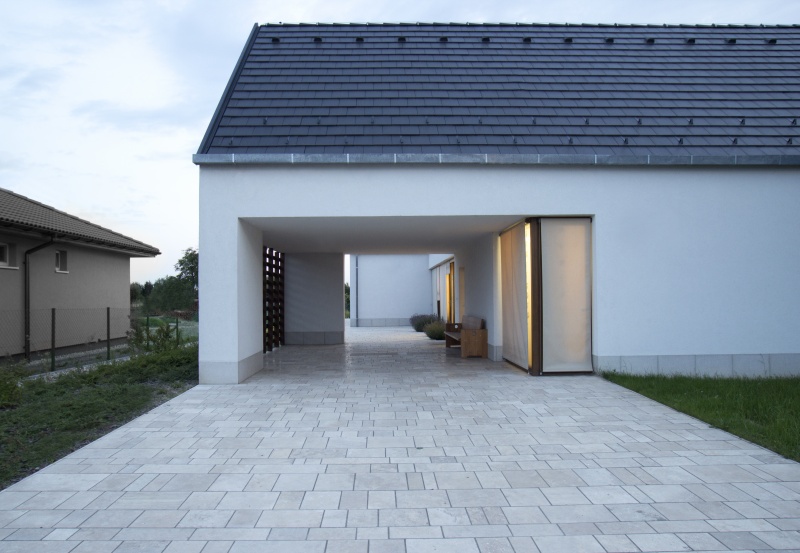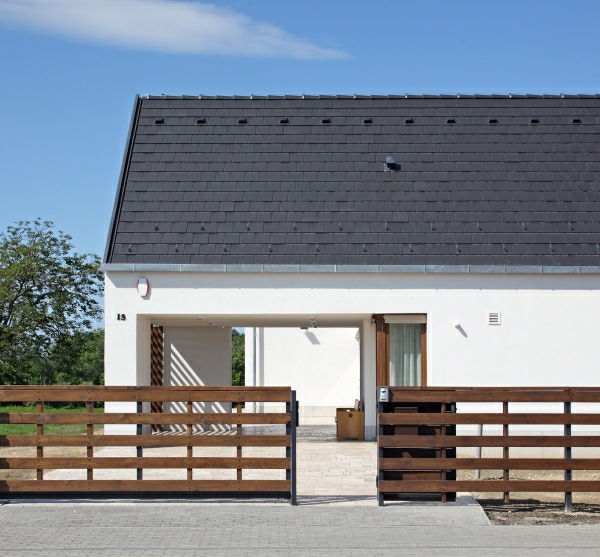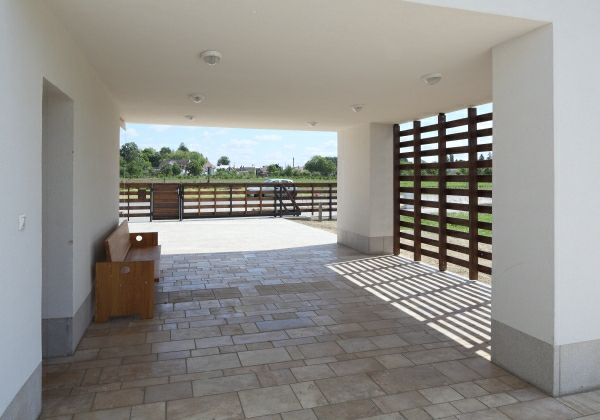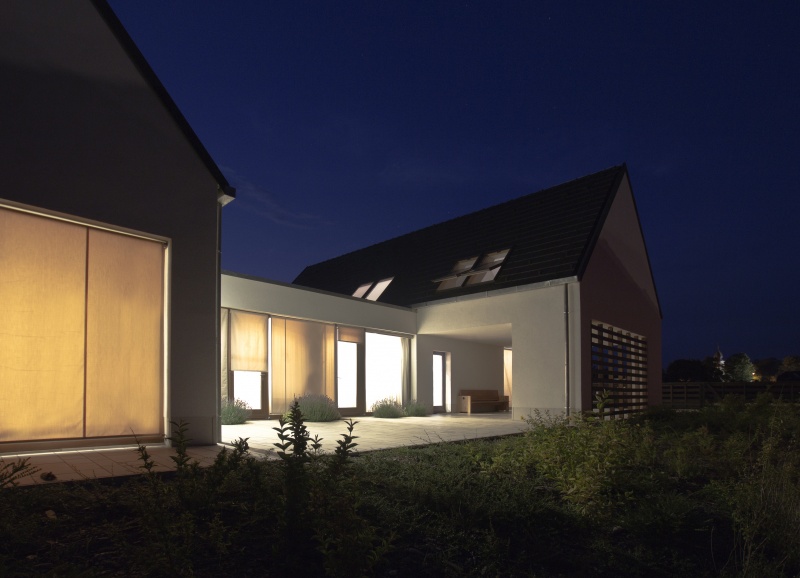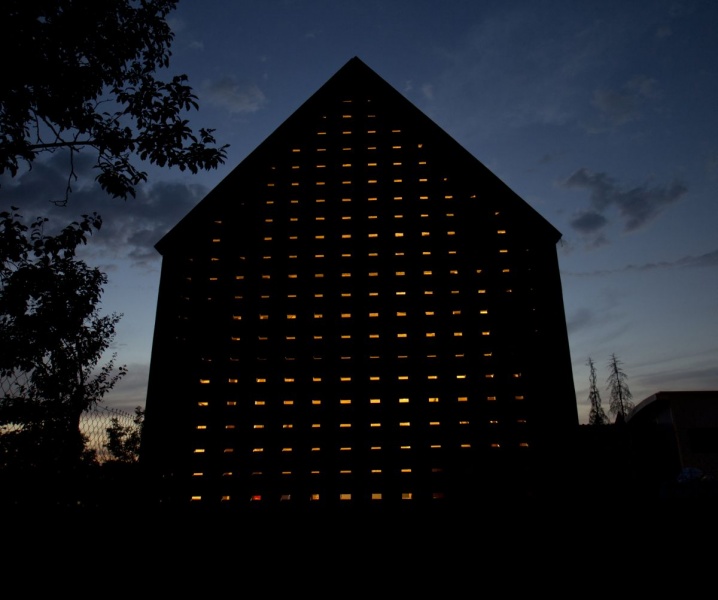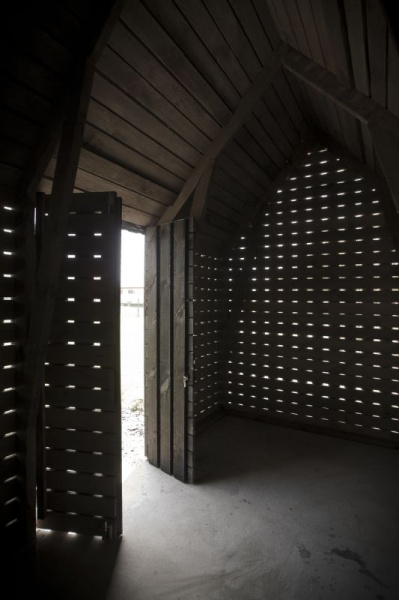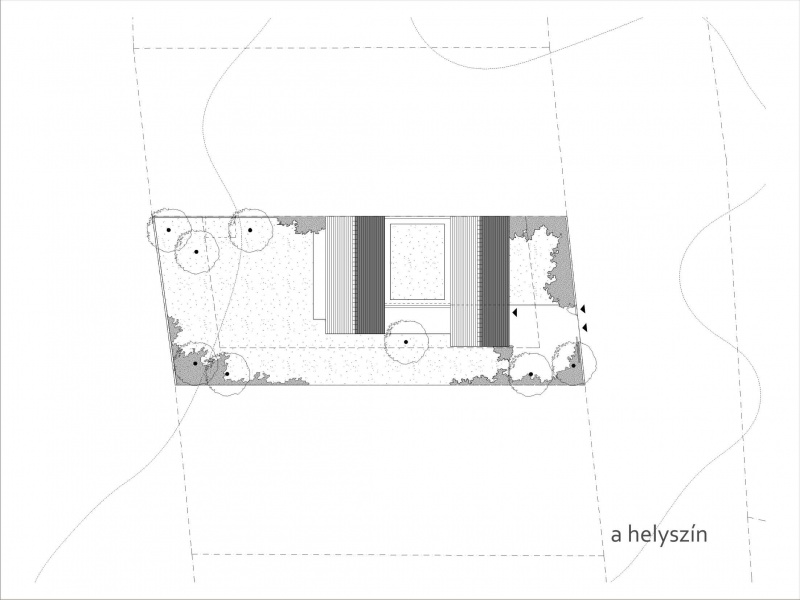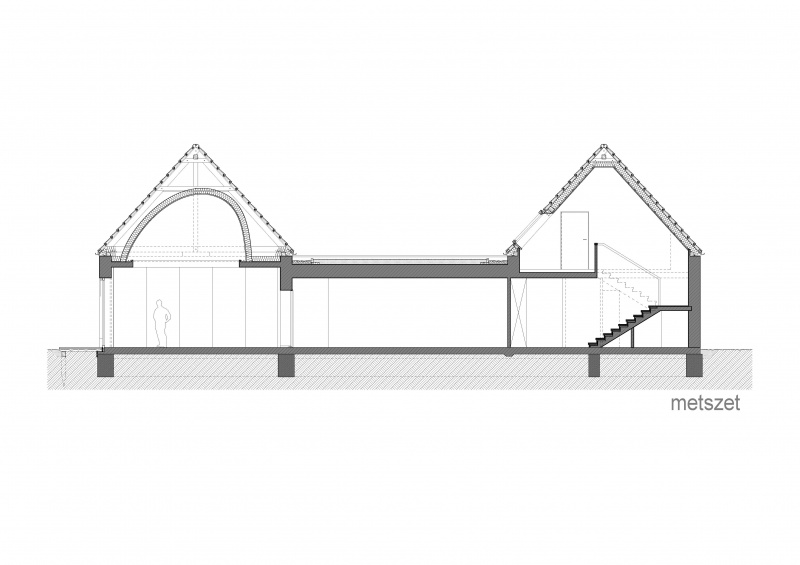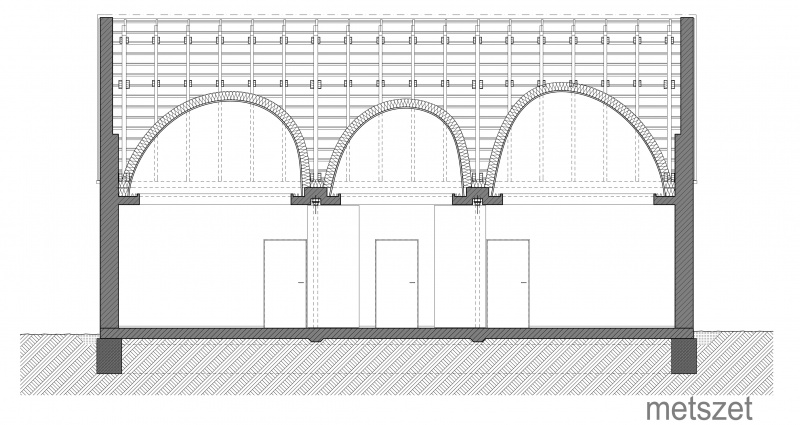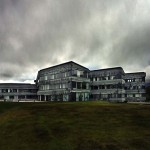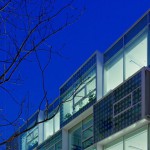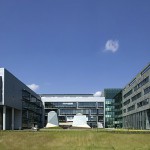The Csányi Foundation for the Children’s first self-managed community center has been built in Somogy county, Hungary. The Nagybajom located building’s main profile is to educate disadvantaged but gifted young people, but it accommodates functions for free time activities as well.
- architects: Csaba KOVÁCS, Rita MADARASI PAPP - Nartarchitects
- year of design/construction: 2009/2010
- photography: © Áron VASS-EYSEN
- → see the building on the map “hungarian architecture”!
The ensemble is formed by two traditionally styled,pitched roofed houses with a flat topped mass bonding them. The three masses are enclosing a terrace. The building on the side of the street involves the offices, a kitchen, sanitary units and a guest room and a quite community hall upstairs. On the other hand the building towards the garden is the place for education. It facilitates the computer lab and the language and drama classrooms. The spaces are separated by mobile walls, so the system is quite flexible and can easily adapt to the changing needs of everyday life. The linking mass functions as a space for community life. It contains as well the sanitary units and the engineering block.
The architects made quite an effort to create an efficient and sustainable building while using simple, but well deliberated elements. The walls got a simple white plastering and the roof is covered with black tiles. Towards the street the wall of the first mass opens up, creating a covered outdoorarea, which appears as a gate to the inner world of the ensemble.
An interesting thing about the project is that the Foundation assigned Csaba Kovács for another task, the planning and realization of a small tool storage building in the back of the site. The little construction with its perforated wooden walls demonstrates an attentive and affectionate planning by architects Csaba Kovács and Áron Vass-Eysen.
A few words by Csaba Kovács about the community Building and it’s future:
“The Center is the first Community Building which has been created and realized to serve the unique needs and aims of the Foundation. The common work and gathering with children will show us which are the fitting and which are the amended parts of the architectural programme, so that we can correct them in the upcoming buildings of the Foundation. An important part of the ensemble is the garden, whichis not quite finished yet, so as it will be in thefuture the symbiosis between the House and the Garden can create the real community enforcing home of the Foundation.”
Maybe these few sentences show the very sensitive attitude of the architects to this task, which helped them to create a lovely and clean environment for the children.
Translation: Deborah BOTH
Publications in English:
Data:
- client: Csányi Alapítvány a Gyermekekrért
- scale: 266 m2
- the building on the architect's homepage;

